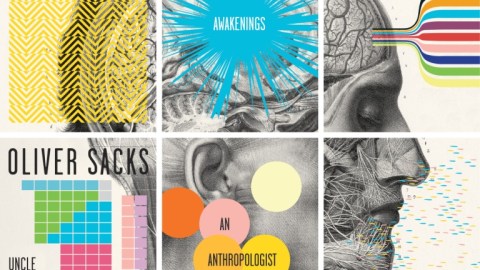Diagnosing a Migraine: How Popular Science Helped A Writer Cope

–Guest post by Declan Fahy, AoE’s Science and Culture correspondent.
Can popular science writing help diagnose a medical condition? It did for me.
Since I was a teenager I had been suffering occasionally from crippling headaches that made me nauseous and bed-bound, sometimes for days. Before these headaches, my vision would change. It was as if I was watching the world through a pane of glass, half of which was smudged. The dividing line between the smudged part of my vision and the clear part consisted of a jagged, black and white zigzag line. If I happened to be reading, certain words or figures would vanish from the page. If I happened to be outside, half a street sign would disappear as I looked at it.
I explained these headaches to friends, even going so far as drawing out my impression of the visual distortions. Of course, I should have mentioned this to my doctor, who would have diagnosed it quickly. Instead, my epiphany came when, browsing in a bookstore, I opened a copy of neurologist and writer Oliver Sacks‘s Migraine, first published in 1970. There on the book’s pages were sketches and artists’ impressions of the visual disturbances and sensory hallucinations that came before the onset of migraines. There were the same jagged lines, the same smudged patches of vision. It was revelatory.
It was clear from the book that I had a visual migraine, a migraine with aura, sometimes called classical migraine. This aura was characterized by an altered perception of color, space and movement – a strange minutes-long disruption of the visual world that was usually followed by nausea and a throbbing pain on the left side of my head. This migraine aura, as Sacks’s mother, a doctor and migraineur, once explained to him, were due to “a sort of disturbance like a wave passing across the visual parts of the brain”.
From reading the book, I learned that my set of unpleasant experiences, the visual strangeness, the headache, the nausea, the occasional inability to speak, the lethargy, the extreme irritability, were not separate, but are part of what Sacks noted to be “characteristic constellations” of symptoms that occurred interdependently around a migraine. I learned that those who had migraines, incidentally, have their own collective label, migraineurs. There was also a section on my particular type of partial blindness that preceded an attack: negative scotoma.
Some of the most interesting sections of Migraine discuss in detail the phenomena of migraine aura. Interestingly, these altered states have been reproduced in works of art, including the paintings depicting heaven by the 12the century religious mystic Hildegard von Bingen and some of the surreal scenes in Alice in Wonderland. Sacks discusses his own experiences in this blog post at the New York Times’s migraine blog, Patterns. At the same blog, writer Siri Hustvedt described seeing lights and little people as part of her migraine aura.
The book, reprinted several times, also features several case histories of patients describing the onset of a migraine attack and how they tried to avoid it: the phlegmatic middle-aged man who knew a migraine was in the mail when he felt the compelling urge to sing, whistle or dance; the psychotherapist whose would notice parts of his patients’ faces would disappear during sessions; the man who found vigorous exercise stopped an attack so would arm-wrestle at work; the professor who rushed home to seek relief after a demanding Friday afternoon teaching session.
Migraine is, at times, a demanding read, containing parts that are filled with technical detail – but I couldn’t have read it fast enough. I found its value to be not only in its careful and holistic approach to the vast range of physiological, psychological and emotional elements that combine uniquely in each case, but in the fact that the book’s case histories put my, comparatively minor, migraines in a wider social, historical and medical context.
This is not to argue that popular science should replace formal medical diagnoses (of course not). There are various motivations for producing and reading popular science – detailing the richness of the natural world, explaining the process of discovery, communicating specialist knowledge to non-specialists, exposing readers to a range of intricate systems of knowledge. All valid reasons. But in this case, popular science was, for me, altogether more personally useful and Migraine remains one of the most important books I’ve ever read.
—Declan Fahy is Assistant Professor at the School of Communication, American University, Washington, DC. Read other posts by Fahy and find out more about the MA program in Journalism and Public Affairs and the doctoral program in Communication at American.





